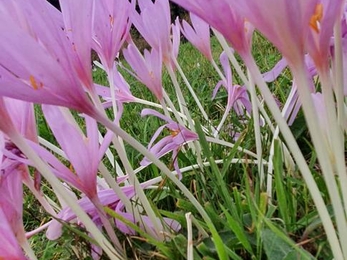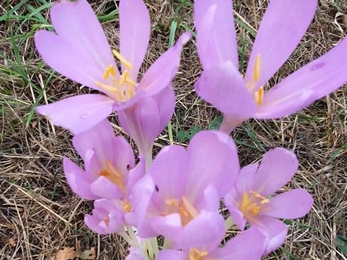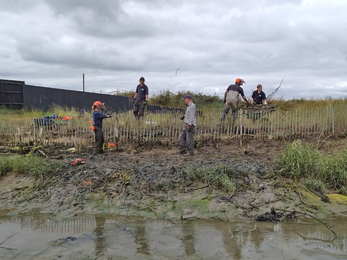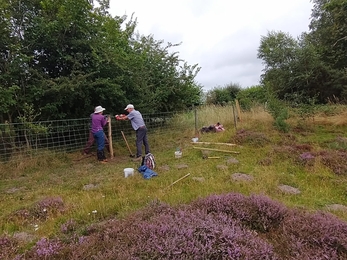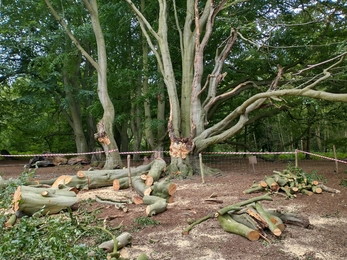Weekly wild news from our reserves – 24 September 2021
Tormentil and ling heather – Sam Norris
The North Suffolk team were thrilled to spot an osprey feeding on the River Blyth estuary recently. Watching an osprey hunting is an amazing sight, as the bird plunges at speed with its talons outstretched to catch fish from the water’s surface. The best views of the bird were seen from our Hen Reedbeds nature reserve.

Osprey on River Blyth estuary - Steve Chadwick
Meadow saffron at Martins’ Meadows
A late-blooming flower, meadow saffron looks like a crocus, displaying similar pink flowers once its leaves have died back. It is also known as 'autumn crocus' or 'naked ladies'; the latter name stemming from the habit of the flowers appearing without any leaves. The plant is in fact a colchicum - a bulbous plant, but not a true crocus. The leaves appear in the spring and may be confused with wild garlic - a potentially lethal mistake, since all parts of the plant are poisonous. The deadly poison of meadow saffron, colchicine, is used to treat gout.
New path at Hazlewood Marshes
The South Suffolk team have been busy reinforcing an eroded path at Hazlewood Marshes this week.
‘Heath-happy like a dor in dung’
There's a similar saying for domesticated animals for whom their job is not the essential breaking down of organic matter and recycling of nutrients we often take for granted. The detrivore know commonly as the dor beetle (or dung beetle) filmed here at Knetttishall Heath is likely to have become active during the day with the recent warm weather. The dor beetle will be looking to burrow a chamber down into the ground where it will overwinter safely before returning to fresh dung mounds in the spring where burrowing a tunnel in the dung will provide a safe space which to lay its eggs and an abundance of food for the new larvae.
Beech nuts!
Volunteers were out in force at Knettishall Heath this week to repair stock fencing used to manage the herd of Exmoor ponies which form part of our management options to manage the mixed heathland habitats. Beech trees are notorious for suddenly dropping limbs in the summer and this mature specimen certainly did some damage. Thanks to our regular volunteers and staff watching over the reserve, we got on with the job in hand immediately.
Tormentil
Why is this word so satisfying to speak aloud? Commonly found scrambling through upland and heathy grassland, its bright yellow flowers are a favourite of bees and butterflies. This photo from Knettishall shows this creeping, prostrate plant, with bright yellow four-petalled flowers, borne on long stalks. The leaves are deeply cut, shiny green and mostly made up of three narrow leaflets and are unstalked. The roots yield a red dye, which is still used as an ingredient in the manufacture of artists’ colours and it is still used as a remedy for diarrhoea and, in the form of a lotion, as a treatment for ulcers and sores.
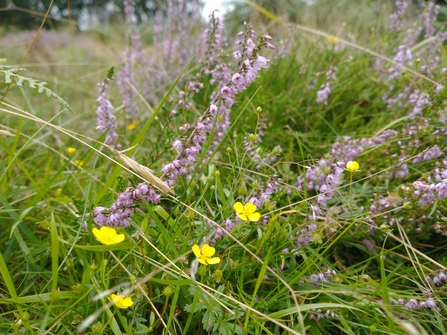
Tormentil and ling heather – Sam Norris


